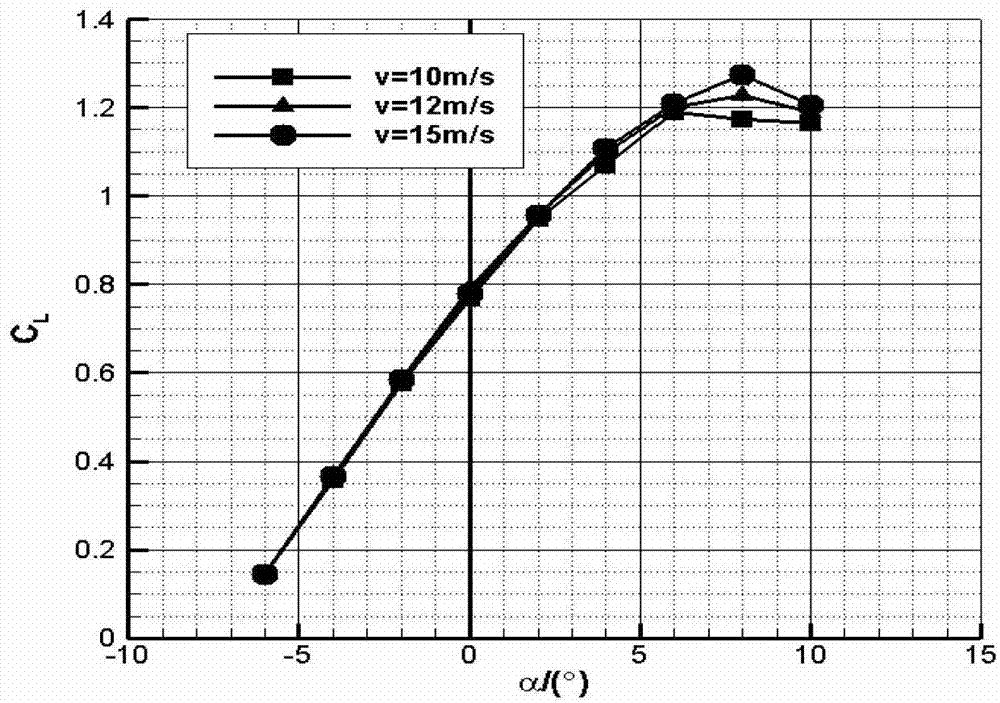Low-Reynolds-number wing section matched with full-wing solar unmanned aerial vehicle
A solar unmanned aerial vehicle, low Reynolds number technology, applied in the direction of wing shape, heat reduction structure, etc., can solve the problems of airfoils that cannot be used in engineering
- Summary
- Abstract
- Description
- Claims
- Application Information
AI Technical Summary
Problems solved by technology
Method used
Image
Examples
Embodiment Construction
[0043] This embodiment is implemented on a full-wing solar unmanned aerial vehicle.
[0044] This embodiment is used for the matching design of the inner and outer wings of a full-wing solar unmanned aerial vehicle, the design speed of the airfoil is 10 m / s, and the design Reynolds number is 2.6×10 5 , the maximum lift coefficient > 1.4, the maximum lift-to-drag ratio > 60, the moment coefficient of the airfoil within the range of 10 degrees angle of attack to keep the moment coefficient variation within ±0.01, and the moment coefficient at the reference point relative to the 1 / 4 airfoil chord length >-0.01. full wing solar drone Figure 10 and Figure 11 shown.
[0045] In order to achieve the above goals, this embodiment provides two airfoils, respectively matching the inner wing and the outer wing of the full-wing solar UAV, wherein the relative thickness of the airfoil 1 matching the inner wing is 11%, and the maximum camber is 3.48% , where the chordwise position of t...
PUM
 Login to View More
Login to View More Abstract
Description
Claims
Application Information
 Login to View More
Login to View More - R&D
- Intellectual Property
- Life Sciences
- Materials
- Tech Scout
- Unparalleled Data Quality
- Higher Quality Content
- 60% Fewer Hallucinations
Browse by: Latest US Patents, China's latest patents, Technical Efficacy Thesaurus, Application Domain, Technology Topic, Popular Technical Reports.
© 2025 PatSnap. All rights reserved.Legal|Privacy policy|Modern Slavery Act Transparency Statement|Sitemap|About US| Contact US: help@patsnap.com



